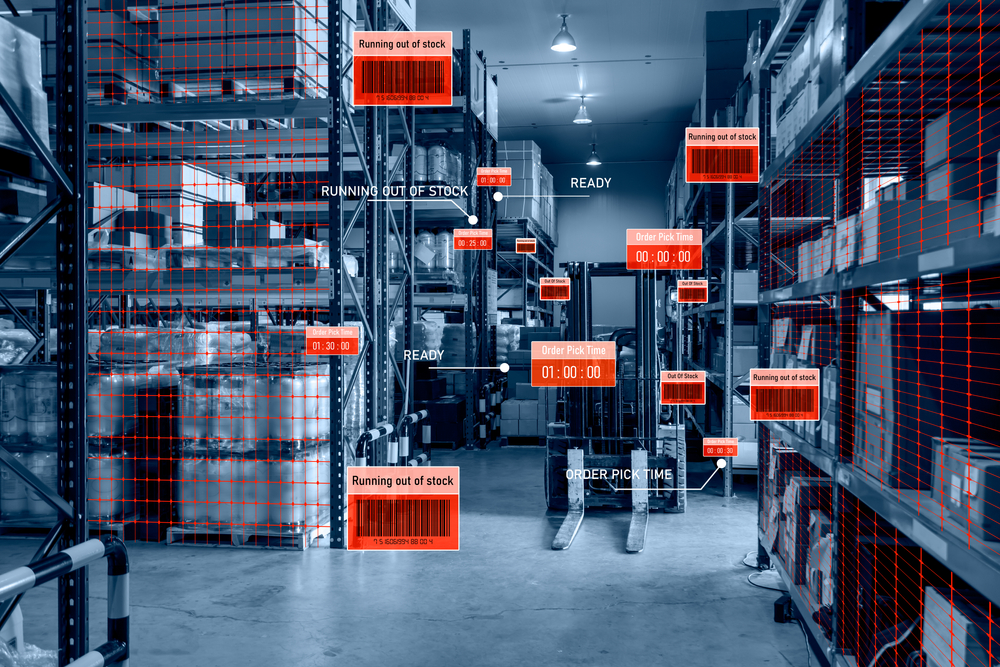In today’s fast-paced world, where consumer demands and market conditions fluctuate rapidly, effective inventory management has become a cornerstone for businesses aiming to maintain a competitive edge. The integration of RF (Radio Frequency) scanning solutions is revolutionizing inventory management, enabling companies to track, manage, and optimize their stock levels with unparalleled accuracy and efficiency. This technological advancement not only improves operational processes but also impacts customer satisfaction by ensuring that products are available when needed.
As businesses grow and supply chains become more complex, traditional methods of inventory management often fall short. The advent of RF scanning technology offers a modern solution that addresses the limitations of these older systems. By embracing RF scanning, companies can not only streamline their inventory processes but also gain valuable insights into their operations, leading to strategic advantages in a crowded marketplace.
Understanding RF Scanning and Its Importance
RF scanning technology uses radio waves to transmit data from inventory tags to a reader. This automated approach simplifies inventory management, reducing human error and saving time. The importance of RF scanning cannot be overstated, as it transforms the way businesses handle inventory, leading to more efficient and accurate operations.
What Is RF Scanning?
RF scanning solutions involve using RFID (Radio Frequency Identification) tags attached to inventory items. These tags contain electronically stored information that can be read by an RFID reader without direct line of sight. This contrasts with traditional barcode scanning, which requires each barcode to be scanned individually. The ability to read multiple tags simultaneously sets RF scanning apart, offering a more streamlined and efficient process.
Beyond the basic mechanics, RF scanning encompasses a range of technologies and systems designed to facilitate inventory management. These systems can be integrated with existing IT infrastructure, providing businesses with a holistic view of their inventory and operations. As a result, RF scanning not only improves day-to-day processes but also supports long-term strategic planning.

Why Use RF Scanning for Inventory Management?
RF scanning provides several benefits over traditional inventory management methods:
- Speed: RF scanners can read multiple tags simultaneously, drastically reducing the time it takes to conduct inventory counts. This speed is crucial in fast-paced environments where time is of the essence. By accelerating inventory processes, businesses can improve turnover rates and respond more quickly to market demands.
- Accuracy: By minimizing human involvement, RF scanning reduces errors in inventory data. Accurate data is vital for maintaining optimal stock levels and ensuring that resources are allocated efficiently. This precision translates to better customer service, as businesses can reliably meet consumer expectations.
- Efficiency: Automated inventory tracking streamlines stock management processes, allowing staff to focus on other tasks. This efficiency not only reduces labor costs but also enhances overall productivity. Employees can dedicate more time to customer service and strategic initiatives, further strengthening the business.
Benefits of RF Scanning in Inventory Management
Implementing RF scanning solutions can transform how businesses handle inventory, offering numerous advantages that extend beyond basic stock management.
Real-Time Inventory Tracking
One of the most significant benefits of RF scanning is real-time inventory tracking. With RFID technology, businesses can monitor inventory levels instantly, providing accurate data on stock availability. This real-time visibility helps prevent stockouts and overstock situations, ensuring optimal inventory levels at all times. By maintaining the right balance of stock, companies can reduce holding costs and improve cash flow.
Moreover, real-time tracking facilitates better collaboration across departments and with external partners. Sales teams can access up-to-date inventory data to inform customers accurately, while procurement teams can adjust orders based on current stock levels. This interconnectedness fosters a more responsive and agile organization, capable of adapting swiftly to market changes.
Enhanced Operational Efficiency
RF scanning solutions improve operational efficiency by automating inventory processes. The ability to quickly and accurately scan inventory reduces the need for manual counts, freeing up staff to focus on more critical tasks. This efficiency leads to cost savings and better resource allocation. As operations become leaner, businesses can reinvest savings into growth initiatives or technology upgrades.
Efficiency gains also extend to the supply chain, where RF scanning can streamline receiving and shipping processes. By automating these functions, businesses can reduce processing times and improve throughput. This enhanced efficiency is especially valuable in industries with high transaction volumes, such as retail and logistics.
Improved Inventory Accuracy
Manual inventory counts are prone to errors, leading to discrepancies that can affect business operations. RF scanning minimizes these errors by automatically capturing inventory data, ensuring accurate and reliable inventory records. This improved accuracy supports better decision-making and planning, enabling businesses to forecast demand more precisely and optimize stock levels accordingly.
Accurate inventory data also contributes to enhanced customer satisfaction, as businesses can fulfill orders more reliably and avoid disappointing customers with stockouts. In today’s competitive landscape, where customer loyalty is hard-won, such reliability can be a significant differentiator.
Streamlined Supply Chain Management
With accurate and up-to-date inventory data, businesses can optimize their supply chain management. RF scanning allows for better coordination with suppliers and quicker response times to changing demand patterns. This improved supply chain visibility enhances overall business agility, enabling companies to pivot quickly in response to market trends or disruptions.
Streamlined supply chain management leads to more efficient operations and reduced lead times. By maintaining a tight grip on inventory levels and movements, businesses can minimize delays and ensure that products reach customers promptly. This efficiency not only improves customer satisfaction but also strengthens relationships with suppliers and distributors.
Implementing RF Scanning Solutions
Transitioning to RF scanning solutions involves several key steps to ensure a successful implementation. By carefully planning and executing each phase, businesses can maximize the benefits of this transformative technology.
Assessing Current Inventory Processes
Before implementing RF scanning, businesses should assess their current inventory management processes. Identifying areas for improvement helps determine how RF scanning can address existing challenges and enhance operations. This assessment should involve a thorough review of workflows, data accuracy, and resource allocation.
Understanding current pain points allows businesses to tailor RF scanning solutions to their specific needs. By aligning technology with business objectives, companies can achieve a more seamless transition and realize benefits more quickly. Additionally, this assessment can uncover opportunities for process optimization beyond inventory management.
Choosing the Right RF Scanning Technology
Selecting the appropriate RF scanning technology is crucial for a successful implementation. Businesses should consider factors such as the type of inventory, warehouse size, and budget when choosing RFID tags and readers. Consulting with an experienced provider can help ensure the right technology fit. This partnership can also provide insights into industry best practices and emerging trends.
The choice of technology should also consider future scalability. As businesses grow, their inventory needs may change, requiring more advanced or extensive RF scanning capabilities. By planning for scalability, companies can avoid costly upgrades or replacements down the line.
Training Staff
Proper training is essential for maximizing the benefits of RF scanning solutions. Staff should be trained on how to use RF scanning equipment and interpret the data it provides. Ongoing training ensures that employees stay updated on the latest technological advancements and best practices. This continuous learning approach fosters a culture of innovation and adaptability within the organization.
Training programs should be comprehensive, covering both technical skills and the broader context of RF scanning within the business. By understanding the strategic importance of this technology, employees are more likely to embrace it and contribute to its successful implementation.
Integrating with Existing Systems
For seamless operations, RF scanning solutions should integrate with existing inventory management systems. This integration allows for automatic data updates, providing a comprehensive view of inventory levels across the organization. Working with IT professionals can facilitate a smooth integration process, ensuring that systems communicate effectively and data integrity is maintained.
Integration efforts should also consider potential future technologies, such as IoT and AI, which may further enhance inventory management capabilities. By designing systems with flexibility in mind, businesses can more easily incorporate new technologies as they become available.

Overcoming Challenges in RF Scanning Implementation
While RF scanning solutions offer numerous benefits, businesses may face challenges during implementation. Addressing these challenges proactively can help ensure a successful transition and maximize the return on investment.
Cost Considerations
Implementing RF scanning solutions can be costly, particularly for small businesses. However, the long-term benefits often outweigh the initial investment. Exploring financing options or phased implementation can help manage costs. By spreading the investment over time, businesses can reduce the financial burden and ease the transition to new technology.
Additionally, businesses should consider the total cost of ownership, including maintenance and potential upgrades. By budgeting for these expenses upfront, companies can avoid unexpected financial strains and ensure the sustainability of their RF scanning solutions.
Data Security
As with any technology, data security is a concern with RF scanning. Businesses must ensure that RFID data is protected from unauthorized access and breaches. Implementing robust security measures, such as encryption and access controls, can safeguard inventory data. This protection is crucial in maintaining customer trust and complying with regulatory requirements.
Data security efforts should be complemented by regular audits and updates to security protocols. By staying vigilant and proactive, businesses can protect their data assets and minimize the risk of breaches.
Change Management
Transitioning to RF scanning requires changes to existing processes and workflows. Effective change management strategies, including clear communication and employee involvement, can facilitate a smoother transition and increase adoption rates. By engaging employees early and soliciting their input, businesses can foster a sense of ownership and commitment to the new system.
Change management should also address cultural aspects, encouraging a mindset of continuous improvement and innovation. By building a resilient and adaptable organization, businesses can better navigate future technological changes and maintain their competitive edge.
The Future of RF Scanning in Inventory Management
The future of inventory management lies in continued technological advancements, with RF scanning playing a pivotal role. As technology evolves, RF scanning will continue to shape how businesses manage their inventory and interact with their supply chains.
Integration with IoT and AI
RF scanning solutions are increasingly integrating with IoT (Internet of Things) and AI (Artificial Intelligence) technologies. This integration offers enhanced inventory tracking capabilities, predictive analytics, and automation, further optimizing inventory management processes. By leveraging these technologies, businesses can gain deeper insights into their operations and make more informed decisions.
The convergence of RF scanning with IoT and AI also opens up new possibilities for innovation. From autonomous inventory management systems to predictive maintenance, the potential applications are vast and transformative.
Expanding Applications
As RF scanning technology evolves, its applications in inventory management continue to expand. From retail to healthcare, industries are discovering new ways to leverage RF scanning for improved inventory control and operational efficiency. This versatility underscores the technology’s value across diverse sectors, each with unique challenges and opportunities.
In retail, RF scanning can enhance customer experiences by providing real-time product availability and personalized recommendations. In healthcare, it can improve patient safety by ensuring accurate tracking of medical supplies and equipment. As more industries adopt RF scanning, its impact on efficiency and innovation will continue to grow.
Sustainability
RF scanning solutions contribute to sustainability efforts by reducing waste and optimizing inventory levels. As businesses prioritize sustainability, RF scanning will play an essential role in achieving eco-friendly inventory management practices. By minimizing excess inventory and improving resource allocation, businesses can reduce their environmental footprint and support sustainable development goals.
Sustainability initiatives are increasingly important to consumers and stakeholders, who expect companies to act responsibly. By integrating RF scanning into their sustainability strategies, businesses can enhance their reputation and appeal to environmentally conscious customers.
Conclusion
RF scanning solutions are transforming inventory management by providing real-time tracking, improved accuracy, and enhanced efficiency. By implementing RF scanning technology, businesses can optimize their inventory processes, streamline supply chain management, and gain a competitive edge in today’s dynamic marketplace. The strategic advantages offered by RF scanning extend beyond immediate operational improvements, positioning businesses for long-term success.
As the technology continues to advance, RF scanning will remain a cornerstone of effective inventory management, driving innovation and sustainability in various industries. Embracing RF scanning solutions today positions businesses for success in the future, equipping them to navigate an ever-evolving landscape with confidence and agility. By staying at the forefront of technological innovation, companies can unlock new opportunities and thrive in the competitive global market.
Contact CDR Software
Are you ready to transform your inventory management and streamline your operations? Look no further than CDR Software, your all-in-one software solution for convenience distribution. With our cutting-edge technology and tailored solutions, we help businesses like yours optimize processes, improve efficiency, and achieve unparalleled success. Don’t wait—enhance your competitive edge today. Contact CDR Software now to learn how we can elevate your convenience distribution operations to new heights. Visit our website or call us to speak with one of our expert consultants.


